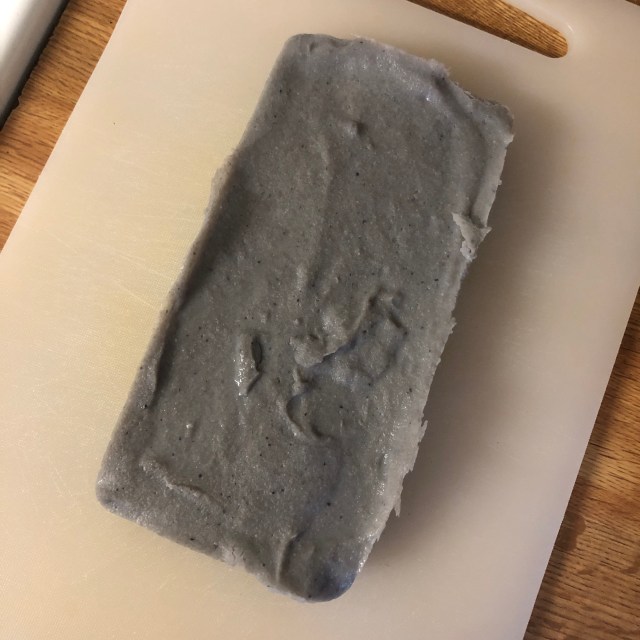While stuff has stopped growing in the garden for weeks now, we’re still busy wrapping up the tail end of the garden, harvest, and preserving season.
Everything has been pulled from the ground, but as of writing this, I’m drying rose hips for tea, figuring out what to do with the massive horseradish haul, and still have to finish off the popcorn.


There were several points in the last couple months where we were overwhelmed, especially when the harvest overlapped with Thanksgiving, five birthdays, and a handful of other social engagements, but we kept telling ourselves that come November it’s pretty much all over and we’ll be glad we did it.
And you know what? Even back on November 1st I was feeling that relief. I have a solid seven months ahead of me of just enjoying this food and not having to do any garden or preserving work.

End of season reflections
I’ve yet to do my annual tally of total weight harvested and the equivalent grocery value, but it’ll be interesting once I get to it. 2024 was a record year for things like carrots, beets, garlic, and rhubarb, but lower than average for corn, potatoes, and tomatoes. I’m not sure how the whole harvest balances out.
Some successes and new discoveries included:
- Chamomile. I’d been wanting to grow this for years but finally found seedlings. The tea is fantastic so we will be upping our chamomile next year.
- Rose hips. They’re currently in the dehydrator but I can’t wait to try them in tea. The Sleepytime Tea I buy is a mix of six or seven ingredients, but the first three are chamomile, mint, and rose (they use rosebuds, I’d use rose hips), so I’m hoping we come up with a blend pretty similar.
- I love my steam juicer. Like, a lot. I use it frequently.

Some “better luck next time” experiences this year included:
- Growing mushrooms were a flop. We did get some super tiny mushrooms but certainly not enough to make the effort worth it. However, we will try again next year. It often takes us a couple years to figure out how to make something really work, so maybe the same is true here.
- The rainy and cold start to the season created all sorts of problems. Our chickpeas didn’t grow and we got next to no kidney beans. We did manage a record haul of black beans though!

Planning for next year
Even though we’re just winding down this year’s garden, we can’t help but think ahead to next year already.
In addition to expanding the chamomile mentioned above, we’ve got a few other changes in mind:
- We really want mushrooms to work. Over the winter, I’ll reach out to my “mushroom guy” and run our experience past him and see if we can figure out what might’ve gone wrong this year and figure out a better strategy for 2025.
- We like to rotate crops a bit. It’s good for the soil, but we also learn that certain produce grows better in different parts of our garden. It might be due to differences in sun, water retention in soil, soil quality, microorganisms, or a million other things. The big change is moving the corn. We usually plant it in this long stretch between our sidewalk and fence. Between the corn and the fence we usually have sunflowers. It seems sometimes the sunflowers grow fast and shade the corn, stunting their growth—and other times it seems the opposite with the corn stunting the sunflowers. Also, while the squirrel raids our whole garden, it lives in the tree right next to the corn, so maybe moving it away will reduce the damage it does.
- Popcorn is also a problem that requires changing next year. The issue is that popcorn needs to completely dry on the stalk before it’s picked, which means it’s in the garden extra long and the squirrel will eventually raid it. In 2023, it devastated our entire popcorn patch in half a day. This year, we noticed it raiding the popcorn fairly early in, so my husband chopped all the popcorn down and hung the stalks upside down in the garage to let them dry. We thought we’d defeated the squirrel… only to later discover other rodents in the garage had eaten a good portion of our popcorn. We did get a harvest this year, but not as nice as back in 2022 before the local rodents discovered how tasty popcorn is. For 2025, the plan is to cut them down when we see the squirrel starting to pay attention, and then hang them upside down indoors where it’s rodent free.
Enjoying the fruits of our labour
All work aside, we now enter into my favourite time of year—enjoying our abundance.
We share our harvest with a handful of people—family, friends, and neighbours. With the overwhelming hauls of food we bring in, even giving out a considerable amount of food leaves more than enough for our family of two for a full year.
Ahead of us we have a year of tasty dinners—pasta with home canned pasta sauce, pesto dinners with frozen pesto sauce, curries with home canned butter chicken sauce, soups for lunches, vegetables to accompany every meal, fruit to throw in overnight oats, juices to keep us going, and country wines for sharing with guests.










































































